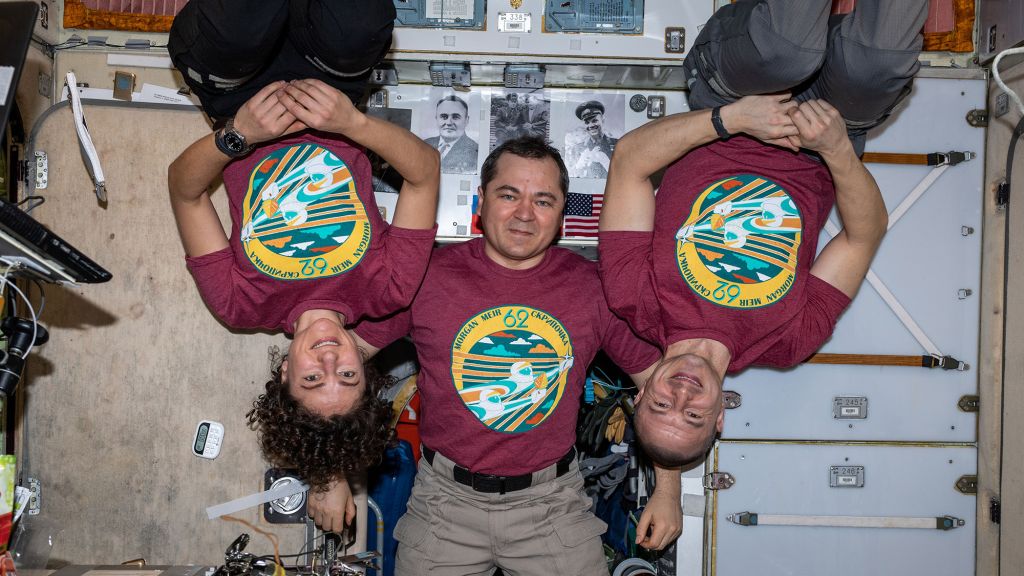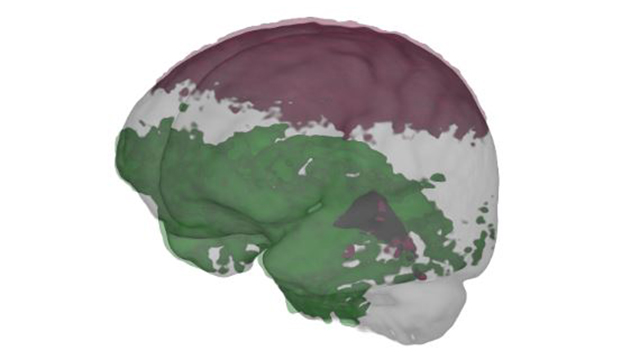Without gravity, the fluid around an astronaut's brain moves in weird ways
The brain is surrounded by craniospinal fluid, which has several functions.

Fluid around the brain redistributes in the skull during spaceflight, scientists found in a new study of 11 cosmonauts who visited the International Space Station (ISS).
The study, which confirms previous findings about the effects of microgravity on the human brain, was led by Steven Jillings, a doctoral student at the Lab for Equilibrium Investigations and Aerospace (LEIA) at the University of Antwerp in Belgium. Previously, Jillings co-authored two studies that examined the effect of spaceflight on the brains of Russian cosmonauts, and recently Jillings took the analytical helm to further explore the topic.
Jillings and the team studied the brains of 11 cosmonauts before their spaceflights, then again nine days after landing, and then again six to seven months after their return to Earth. Jillings participated in previous work on spaceflyer brains that used a standard type of magnetic resonance imaging (MRI), and this new work used a particular type of MRI scan that involved a series of diffusion MRI (dMRI) images. This allowed for a more in-depth look at the brain landscape to see how spaceflight has changed it.
Related: Space travel can seriously change your brain
Jillings became interested in the effects of spaceflight on the human brain with the help of his supervisor, Floris Wuyts, who has a background in studying the vestibular system — a set of sensory organs in the inner ear that are responsible for balance and spatial orientation.
In 2009, Wuyts wrote a proposal to do MRI scans on 11 cosmonauts from the Russian space agency Roscosmos to study brain neuroplasticity, or the capacity of the brain to adjust to new environments. That work began in 2013 and Jillings joined in 2016. The new analyses were based on observations of the cosmonauts' brains which began in 2017, by which time the researchers had enough data to do a formal statistical test. Jillings primarily analyzed and interpreted the data for this study.
The human body is designed to function under Earth's gravity, and many of its parts have evolved to respond to this downward pull. These biological systems change when humans (and other mammals) spend an extended period of time in orbit, where a microgravity environment causes a sensation of weightlessness.
Get the world’s most fascinating discoveries delivered straight to your inbox.
On Earth's surface, liquid and gel-like material in our body responds to gravity in ways that are important for our day-to-day functioning. One place where this happens is in the otolith organ, a part of the vestibular system.
The otolith, found inside the inner ear, helps the brain to receive information that tells it how the head is oriented. It is made up of tiny, crystal structures called otoconia, which lie flat on top of a gel in the inner ear.
When the head makes a movement like tilting down to one shoulder, gravity pulls the otoconia crystals down across hairs within the inner ear, sending a signal to the brain that the head has tilted. But in microgravity there is not enough gravitational pull to tell the brain that the head has changed position. The first several days in space are disorienting for space crew members, and prolonged exposure to microgravity means they need a period of readjustment to gravity when they come back down to Earth.
Related: Landmark NASA Twins Study reveals space travel's effects on the human body
Jillings and his team found that, during spaceflight, the fluid around the brain and spine doesn't move the way it does on Earth. This new work found that cosmonauts who had served six-month missions on the ISS experienced upward shifting of their brains, and that the fluid found around the brain and spine redistributed as a result of being in microgravity.
"The cerebrospinal fluid is all the fluid that goes around your brain and spinal cord; it surrounds it," Jillings told Space.com. "[The fluid] has multiple functions, but the fact that it's around your brain also helps [when you] bump your head. It acts as a buffer space [so] you don't immediately hit your brain tissue."
In addition to cushioning the brain, the cerebrospinal fluid also helps to clear waste products from the mind's organ. And in the bodies of the cosmonauts monitored in this study, this fluid seemed to pool near the lower part of the brain after they returned from space. This suggests that the brain has lifted. However this is temporary and reversible, as follow-up scans showed that the brains had almost fully returned to what they looked like in pre-flight scans.
The study confirmed what earlier studies also detected, which was that the open structures found deep inside the brain where cerebrospinal fluid is produced, called ventricles, become dilated in space. And this new work found that, although the ventricles did shrink between post-flight exams and the 7-month follow-up exams, there was still more cerebrospinal fluid inside cosmonaut ventricles than before they went to space.
The researchers saw that there is indeed a hampering of the normal circulation of this fluid. And, although it doesn't seem to have an effect on the pressure inside the skull, this disruption to the normal circulation of craniospinal fluid could be the reason that generally, some crewmembers experience blurry vision during and after spaceflight.
Jillings told Space.com that using different MRI techniques in future related research could help scientists glean even more information about the brain in space, like whether or not spaceflight causes any structural change to the brain itself.
Jillings' study was funded by the European Space Agency and it is a collaboration with the Institute of Biomedical Problems of the Russian Academy of Science. The research is detailed in a paper published Sept. 4 in the journal Science Advances.
Follow Doris Elin Urrutia on Twitter @salazar_elin. Follow us on Twitter @Spacedotcom and on Facebook.




